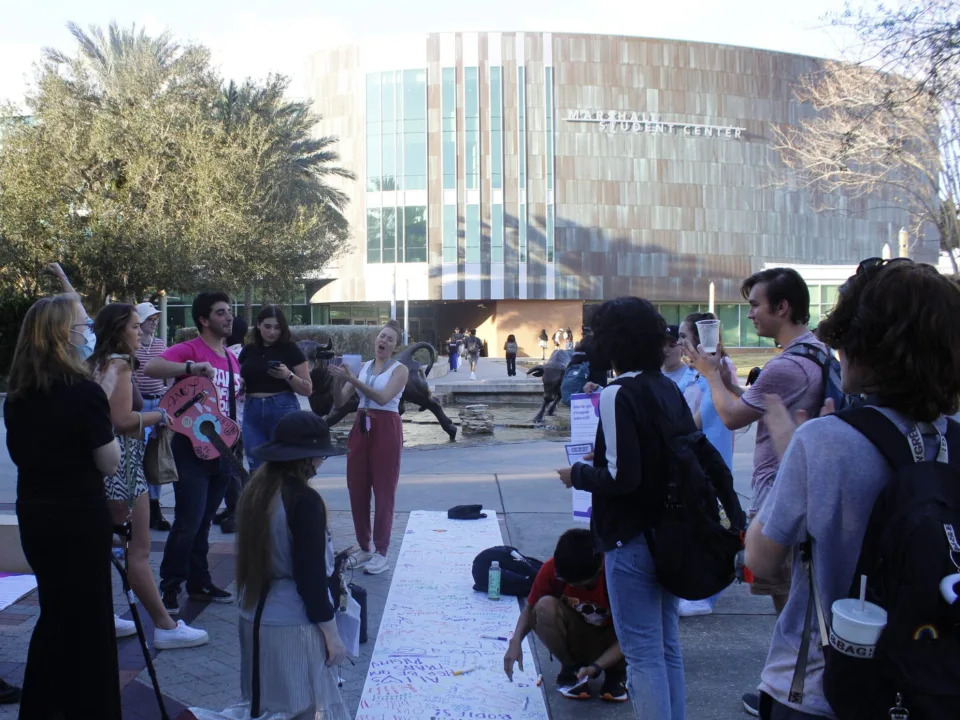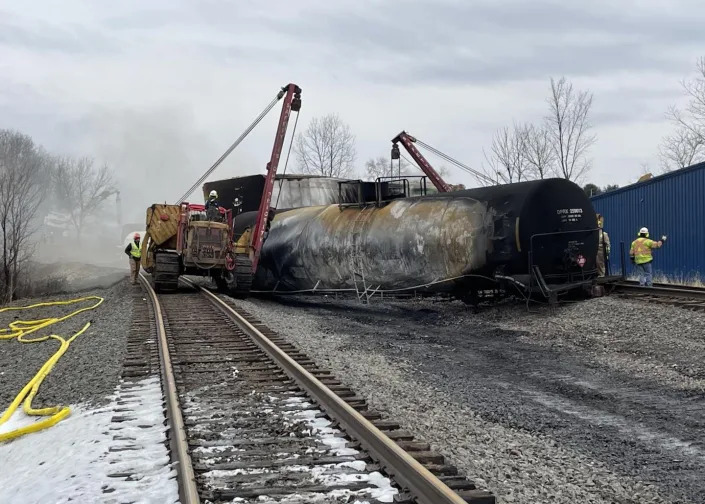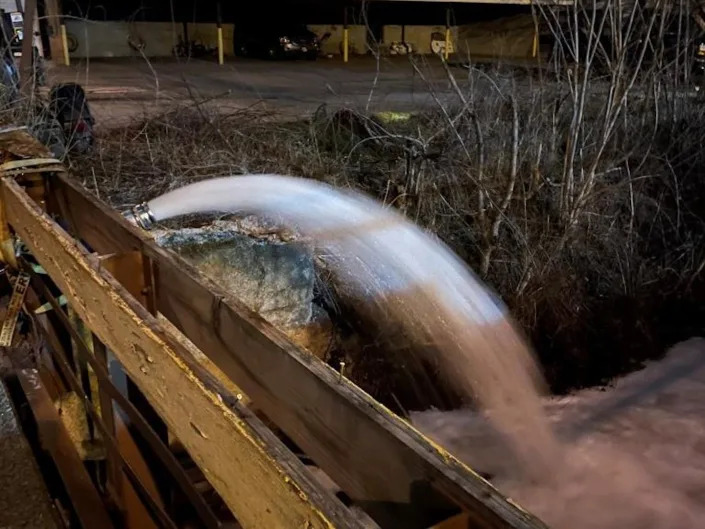The Washington Post
Plant-based foods may reduce prostate cancer progression, study says
Marlene Cimons, Special to The Washington Post – February 15, 2023
A diet heavy in plant-based foods – fresh fruits and vegetables – can reduce both the progression of prostate cancer and the likelihood that it will return, new research shows.
Eating fruits and vegetables has many health benefits, such as reducing the risk of Type 2 diabetes and cardiovascular disease, and contributes to a longer life span, said Vivian Liu, clinical research coordinator for the Osher Center for Integrative Health at the University of California at San Francisco and lead study author.
Subscribe to The Post Most newsletter for the most important and interesting stories from The Washington Post.
“Now, we have evidence that they can influence this very common – and sometimes deadly – cancer in men,” she said.
Prostate cancer is the second-most common cancer in men, after skin cancer, with an estimated 288,300 new cases and 34,700 deaths projected for this year. Risk factors include age, with most cases occurring in men older than 65; race, with African Americans at an increased risk; and certain gene mutations.
“This is something men can do for themselves with a healthy grocery shopping list,” Liu said. “And it doesn’t require drugs or other medical interventions.”
Higher amount of plant-based foods, lower cancer growth risk
The link between diet and cancer risk has been explored in many studies. Eating certain foods such as low-fat products and shunning others such as red meat have been linked to a lower risk of certain cancers, chief among them breast and colon. For prostate cancer, eating foods rich in the antioxidant lycopene, such as tomatoes, appears to lessen the risk.
Liu and her team focused on men who already had prostate cancer and were at risk of the cancer growing or returning after treatment. The researchers found that men with prostate cancer who reported diets containing the highest amounts of plants had a 52 percent lower risk of disease progression and a 53 percent lower risk of recurrence compared with those whose diets had the lowest amounts of plants.
The disease advanced in 204 of the more than 2,000 participants during the study period, Liu said. “This is a small number, which is significant,” she said.
She said the analysis involved scoring for good and bad foods, and though the participants reported the amounts they ate, it was not possible to state the amounts as individual or recommended servings of fruits and vegetables.
The 2020-2025 Dietary Guidelines for Americans recommend that adults should consume 1 1/2 to 2 cups of fruit equivalents and 2 to 3 cups of vegetable equivalents daily.
The results of this as-yet-unpublished observational study will be presented at the 2023 American Society of Clinical Oncology (ASCO) Genitourinary Cancers Symposium this week in San Francisco. The research was a sub-study of the Cancer of the Prostate Strategic Urologic Research Endeavor, or CaPSURE, which is a large multisite study of 15,000 men started in 1999 and looking at many aspects of prostate cancer.
The plant-based sub-study research began in 2004 and involved 2,038 men with early-stage prostate cancer – cancer that had not spread or whose spread was limited.
They completed questionnaires about how often they ate about 140 foods and beverages, including such items as broccoli, red meat and potatoes, trying to gauge both the good foods and the bad, Liu said.
“We did not tell the men what to eat, since this was an observational study,” she said. “They ate what they wanted to eat and told us what it was.”
Many things influence cancer – people who eat healthy foods often engage in other healthy habits – and the investigators took other factors into account, including walking pace – a faster pace seems to help prostate cancer patients – smoking, diabetes, family history of prostate cancer, household income, education level, height, body mass index, alcohol use, and multivitamin and supplement use.
Implications for future studies
These findings are consistent with previous research “and extend the health benefits” and “few risks of a plant-based diet,” said Donald Hensrud, associate professor of preventive medicine and nutrition at the Mayo Clinic College of Medicine, who was not involved in this recent research. One large study, for example, found that consuming plant-based foods was linked to a lower risk of developing aggressive forms of prostate cancer, especially among men younger than 65.
Other scientists called the work important but said future research needs to include more specific analyses of genetics and metabolism to better understand the impact of foods on prostate cancer.
“More such studies in larger populations of cancer patients, with even more detailed studies of dietary elements and measures of blood and tissue levels of nutrients, will be very helpful in designing a more specific cancer-risk reducing, and even cancer-therapeutic diet,” said Jeffrey Jones, professor of urology at Baylor College of Medicine and a urologic oncology specialist. He was not involved in the study.
“Future studies also need to look at the molecular and genetics of the people, and the mutations driving the cancer,” said Nicholas Mitsiades, professor of medicine and chief translational officer at the University of California at Davis Comprehensive Cancer Center, who also was not part of the research. “We need to know how [the patients’] metabolism is programmed because different people may process food differently.”
Mitsiades also pointed out that socioeconomic status may discourage some populations from eating a healthful diet, as fresh fruits and vegetables often are costly or inaccessible. “It’s more expensive to eat a plant-based diet than to go to McDonald’s and have a burger,” he said. “So, it’s not always easy.”
Still, he always advises his cancer patients to avoid animal saturated fats – especially red meat – and to increase plant intake. “This diet is healthy for many other cancers,” Mitsiades said. “Unfortunately, we have not been able to put all these diets into a pill, which is probably what most Americans would like.”
Liu and her colleagues next plan to analyze plant-based diets in relation to prostate cancer-specific mortality, or death, and quality of life at specific intervals – two, five and 10 years – following diagnosis.
Meanwhile, Liu suggested that men – with or without prostate cancer – fill their plates with plants and stick to fresh foods, avoiding plant-based meat substitutes, which tend to be high in fat, she said.
“I love those burgers myself, but unfortunately not all diets are equal in terms of risk factors,” she said.
Stick to the basics, she advised, “fresh fruit and vegetables – and whole grains. The more you can fit in, the better.”
It is a common refrain that fruits and vegetables are good for you, Liu said. “And now, here’s another reason to say it.”











